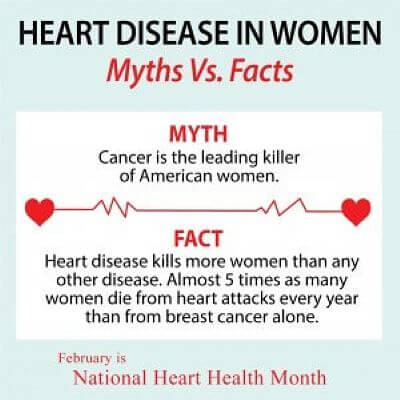
In honor of National Heart Health Month, we’d like to touch on a disease that affects an estimated 44-million of women every year. Cardiovascular disease is the #1 killer for women across America. You may be surprised to learn 1 in 3 deaths of women is caused by this deadly disease.
Heart disease differs from woman to woman. Warning signs can be hard to spot and even non-existent. That’s why it’s important to take every possible measure to live a heart-healthy lifestyle especially if you have one or more risk factors.
Cardiovascular disease can include diseased blood vessels, structural problems, or blood clots. Over time, heart disease can cause strokes, heart attacks, arrhythmia, and more.
Who’s at Risk?
The truth is cardiovascular disease can adversely affect anyone. However, there are several factors that can put you at a higher risk. A whopping 90% of women have at least one or more risk factors for heart disease.
Today, we’ll go over several key risk factors women should be on the lookout for. While some factors cannot be controlled such as age, race, or genetics, there are steps you can take to lower your chances of getting heart disease.
Women from all walks of life should get an annual well-woman exam and maintain an open dialog with their physician. If you have a family history of heart disease or any of the following risk factors, your doctor should be aware.
Age
Most women don’t start to think about heart disease until they’re older. And, while it’s true that age can play a major role in your heart health, it doesn’t always have to. Did you know, the combination of birth control and smoking increases young women’s risk for getting cardiovascular disease by 20%?
Family History
Family history plays a key role in your heart health. High blood pressure and cholesterol levels can pass from one generation to the next and can increase your risk.
You may be at a higher risk for getting heart disease if:
- Your father had a heart attack before the age of 55.
- Your mother had a heart attack before the age of 65.
- Your mother, father, sister, brother or grandparent had a stroke.
Race
Yes, heart disease affects all women but your ethnicity can put you at a significantly higher risk. For example, Hispanic women are more likely to develop heart disease 10-years earlier than Caucasian women. Forty-eight percent of African-American women 20-years and older have cardiovascular disease.
High Blood Pressure/Cholesterol
Having high blood pressure for long periods of time puts added strain on your heart. After a while, it scars and damages the arteries leaving you vulnerable to heart attacks, stroke, kidney failure, and more.
High cholesterol levels can potentially harden and line the artery walls over time causing unwanted blockages. These blockages can lead to blood clots, heart attacks, and stroke.
Smoking
We all know just how bad smoking is for us. It causes cancer, makes us gain weight, and increases irritability but did you know it affects your heart too? Take a look at how smoking puts you at greater risk for cardiovascular disease.
- Nicotine makes your heart rate and blood pressure levels skyrocket.
- Carbon monoxide in tobacco rob your heart, brain, and arteries of oxygen.
- It damages your blood vessels and makes your blood sticky, making blood clots more likely.
- It lowers your tolerance for physical activity and decreases HDL (good) cholesterol.
Women who smoke are 25% more likely to get heart disease than men who smoke.
Sedentary Lifestyle
Physical inactivity can lead to blood clots, high blood pressure, heart attack, and strokes. People who don’t have regular to moderate physical activity are 30-40% more likely to be at risk for heart disease.
Weight
Even if you have no other health conditions, being 20% overweight can put you at a greater risk for cardiovascular problems. Carrying extra weight (especially in the waist area) puts extra strain on your heart. It can also increase your risk for other heart disease causing factors such as increased cholesterol and blood pressure levels, and induced diabetes.
Diabetes
Adults who have diabetes are 2-4 times more likely to have heart disease or a stroke. Over time, high glucose levels can damage blood vessels and the nerves that control the heart. The good news is, diabetes can be controlled through medication, as well as diet and exercise.
Signs You’re Having a Heart Attack
When it comes to actual warning signs, men and women differ a good deal. While men typically have very specific symptoms such as tightness or extreme pain in the chest, women have more subtle symptoms.
Some signs you may be having a heart attack include (but are not limited to);
- Indigestion
- Shortness of breath
- Nausea/vomiting
- Dizziness/ lightheaded
- Discomfort in the jaw, upper back, or arms
- Prolonged excessive fatigue
Listen to your body. If you think you may be having a heart attack, stay calm and seek immediate medical attention.
Steps to Take Towards a Heart-Healthy Lifestyle
Okay, you may not be able to go back in a time machine and lower your age, but there are several steps you can take towards a healthier life.
- Be more active. For every hour of regular exercise you get, you keep heart disease at bay and gain approximately two hours of additional life.
- Lose Weight. Losing as few as 10-pounds can decrease your risk for getting heart disease.
- Avoid Smoking. After only one year of non-smoking, your risk for cardiovascular disease is cut in half.
- Lower Cholesterol Levels. Lowering your cholesterol by 1 point decreases your risk for heart disease by 2%.
- Reduce Blood Pressure. About 7 of every 10 people having their first heart attack have high blood pressure.
Implementing a healthier lifestyle through diet and exercise can add years to your life. Consider making small changes to your daily routine and keep heart disease at bay.
Schedule an annual well-woman visit today to learn more about your risk factors for getting heart disease. Together, you and your doctor can create an action plan for preventing and maintaining healthy heart health.


